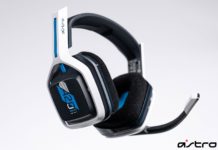ToonTalk is a programming tool for children that uses manipulative, animated characters instead of traditional programming code to carry out tasks. The goal is to introduce children to the type of thinking that is required in programming.
There are three modes of play when starting up ToonTalk: Play Games, Demos and Free Play. Play games is a set of puzzles, sixty in all, that introduces players gradually to the main tools and concepts of the game. It’s best to begin play in this mode to get a good feel for the game functions. Each puzzle will require some creative thinking and trying out of different solutions; Marty the Martian is always on hand to give advice and instructions, but sometimes the instructions aren’t very clear. Once all the puzzles have been worked through, the introductory demo is a good place to visit. Other demos offer different insights into the possibilities of this program, like designing simple games. Finally, Free Play is an open-ended design area where kids can experiment with making various creations. Included with the game is a handy deck of cards that features the tools of the game, like Maggie the Magic Wand, Dusty the Vacuum Cleaner, Tooly the Toolbox, and the like, each with a description of its respective job. Creations can be saved and traded with other players, too, plus animations can be saved as Java applets in the browser.
The playing area is designed like a LEGO board, as are the characters when not in motion. The player is represented by a hand at the playing area, that can grasp different objects lying around. The interface is decently designed and fairly simple to navigate, except for the fact that the size of the characters gets in the way, as they’re entirely too big and tend to overlap each other (the sizes can be manually adjusted by using a tool to shrink the characters, but as this has to be done separately to each one, this is time-consuming) . One other slightly irritating facet of the interface is the fact that there is no one-step “undo”, when players mess up, they have to blow-up the whole thing and begin again. The individual objects all “wiggle” when the hand passes over them, but in regards to objects inside other objects, sometimes the wrong object is selected and once an action is accomplished, like copying, there is no recourse except to blow everything up and begin anew. A simple “undo last action” function would have helped tremendously. Another feature I would have liked to see added would be a way to view the “source code” behind the functions, so the more advanced users could begin to get a sense of the coding behind the visuals, although this may be at odds with the vision of this program’s approach to programming.
ToonTalk is a good, useful method of introducing computer programming to children. The animated characters are very cute, although the game itself is not “edutainment”, but strictly educational in tone. The puzzles will have kids willingly using their brains trying to figure out how to accomplish the tasks, and Marty gives out good advice most of the time (sometimes the instructions aren’t very clear, though). The program is best used with adults alongside the kids, to help with ideas and focus. As such, a classroom setting with a computer literate teacher who is well-versed with the program is the ideal use for this program, although a homeschool setting is also feasible. For children who are already using it at school, a home copy would definitely be a plus, and the price is very reasonable for an educational product. [Note: In Version 2.36, there is a bug in puzzle #13 in the Play Games mode, which can be fixed by a download from the ToonTalk site at
http://www.toontalk.com. Just contact the site, and they’ll send you one.]
Gameplay: 7.2
The game is fairly inviting, and will keep kids motivated for short periods of time, but for longer efforts, adult supervision is needed.
Graphics: 7
The characters are very cute!
Sound: 6
The sound effects are minimal, and the voice of Marty is reminiscent of old “via-voice” type language, where every word is separate and put together into sentences with no inflection.
Difficulty: Medium
Although designed for young children and up, the puzzles are not easy and will require help from adults. Older kids will fare better.
Concept: 8
A very nice idea, to introduce programming to kids with a visual method, especially for kids that learn best that way. While not the first in the field, there’s always room for more!
Overall: 7.4
A good program that will get kids involved with the basics of programming without them being aware of it. The type of thinking used with computer programming is the most important teaching aspect of this game, in my opinion, as the actual languages can be learned later when they are older. This program will help get their minds ready for coding without the pictures later.









